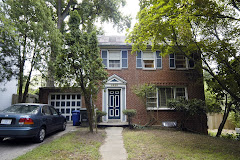Is our history too 'young'?
Many of the historic sites of the queer civil rights campaigns and of community building date from the 1960s and 1970s. To those of us who are still struggling for our equal rights, that seems far in the past. To the National Park Service (NPS), whose rule-making guides most state and local preservation authorities, historic sites younger than 50 years (since they became significant) aren't historic. Yet.
The 50 year rule is a major hurdle for preserving our sites. Although the NPS provides guidelines for submitting sites younger than fifty years, those guidelines require that a site be of extraordinary significance and be widely regarded in the history community as significant. It's no surprise then that no queer historic sites other than the Stonewall Inn have made it on to the National Register or the National Historic Landmarks list.
At the recent National Trust for Historic Preservation conference in Tulsa, I made the point that since most queer historic sites are urban, they stand a good chance of being destroyed or altered beyond recognition before they are eligible for preservation. Two of the early office sites of California's Mattachine Society and Foundation have already disappeared. Here in Washington, DC an entire entertainment district, with roots in the early 1970s, was demolished to build a baseball stadium for a cellar-dwelling baseball team.
Not surprisingly, many in the audience with concerns about second wave feminist sites, Latino sites, African-American and Native American sites chimed in with the same concern. African-American civil rights sites have had somewhat more recognition, despite the 50 year rule, but you have to wonder what is happening with the sites of the Black Power movement and community development that date from the late 1960s and the 1970s.
Though NPS is resistant, there are hopes for change and for working with the rules. After all the Stonewall Inn was recognized as a national landmark just 30 years after the events that made it significant. The onus of responsibility lies first, and foremost, with the queer community, its archives and historical associations, to make the case and submit the sites for local, state, and -- one hopes -- national recognition. If we don't start the process, the rules at NPS can't be challenged and changed.
Queer communities across the country have the primary responsibility for starting the preservation process for their historic sites.
Subscribe to:
Post Comments (Atom)




1 comment:
I think that there needs to be a greater mining of the historical record to identify historic places associated with the GLBT community that would fall within the existing NPS rubric. Do we know about the home of Paula Giddings in Philadelphia, or wherever she may have been when she was doing her work for the movement in the mid 20th century. What about trying to designate the home of the lesbian couple that was the first to marry in California; they were long time activists in the community.
I would love to see if there is anything tied to Bayard Rustin that is still extant, and work on that for designation. I think it will just be a matter of continuing to have surveys of the historic places (extant or not), so that we have an inventory of places potentially to examine.
I also believe that the NPS, particularly for National Historic Landmark Status, is beginning to open up finally to the hindrance that the 50 year rule puts forth. I think that is more related to the architecture of a place, not the historic significance of the site. That is why a place like the Stonewall Inn, a non-descript building, could be advanced as an NHL. The founding sites of the first Mattachine Society or Daughters of Bilitis immediately come to mind.
Finally, existing listed historic sites that have a glbt historic component need to have their descriptive narratives modified to include that information. Those, I think, are potential strategies to move this process forward.
Post a Comment